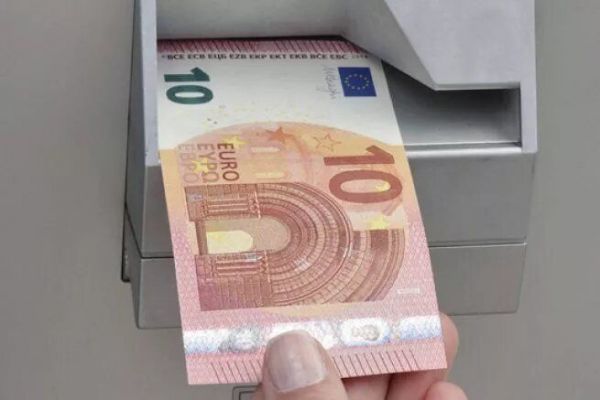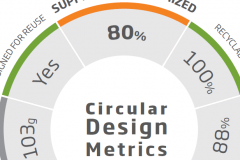The European Central Bank (ECB) unveils a study on the environmental footprint of euro banknotes. It shows that the average environmental footprint of banknote payments amounted to 101 microdots (?Pt) per inhabitant of the euro zone. This is equivalent to an 8 km car journey, or 0.01% of the total environmental impact of a European's annual consumption activities. By comparison, the production of a cotton T-shirt washed once a week for a year is equivalent to driving 55 km.
Carried out in 2019, this Life Cycle Assessment (LCA) takes into account all the activities of euro banknotes, from the acquisition of raw materials, production, distribution and circulation, right through to their disposal. It does not deal with the other functions of euro banknotes and means of payment, such as store of value, coins or electronic payments.
ATMs, the biggest contributor to the environmental footprint of banknotes
The environmental footprint of euro banknotes as a means of payment is mainly made up of the energy consumption of cash dispensers (ATMs), which accounts for 37% of the banknote footprint. Cash-in-transit activities account for 35%, and processing by national central banks (NCBs) for 10%. Paper manufacturing accounts for only 9%.
Various measures implemented since 2004
Since 2004, when the first life-cycle analysis of euro banknotes was carried out, the Eurosystem has taken a number of steps to make banknotes more environmentally friendly, including the exclusive use of sustainable cotton by the end of 2023, the search for a protective coating for low-denomination banknotes to increase their lifespan, and the implementation of new disposal methods for banknotes unfit for circulation and production waste (which eventually led to a ban on landfilling).
What's more, between 2004 and 2019, ATM manufacturers and banks have reduced their environmental footprint by 35%.
Today, to further reduce the environmental impact of its banknotes, the ECB is studying alternative methods of disposing of banknote waste, such as recycling and reusing residual materials, and is seeking to improve the materials and components used in the printing process.







